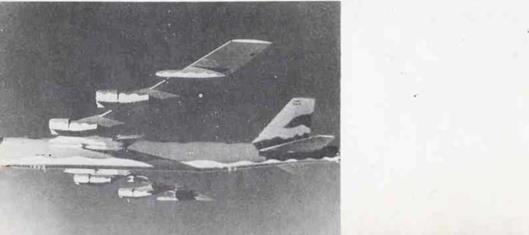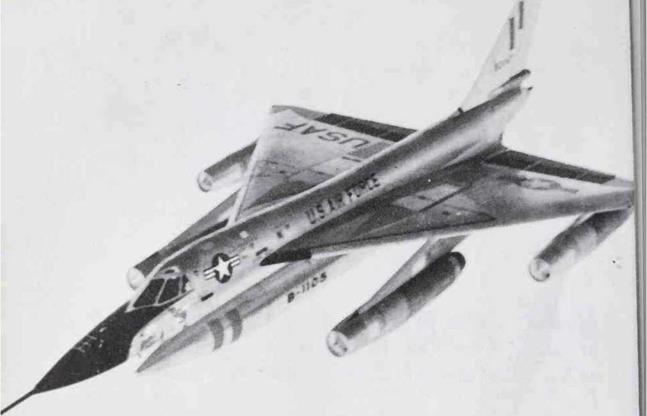BOMBERS
Modern bomber aircraft are streamlined giants. They are equipped with the best jet engines, which produce speeds that compare favorably with fighter aircraft. Bombers normally have extensive ranges. And when a bomber is equipped for aerial refueling, it has a virtually unlimited range.
The Boeing B-52 Stratofortress is the last of the so – called “conventional bombers/’ The first B-52 was flown in April 1952. The last Stratofortress came off the production line in 1962.
The B-52 was designed as a nuclear bomber. Its belly is divided into two separate bomb bays to carry two nuclear weapons. As many as twelve Short Range Attack Missiles (SRAM) can be carried externally under the wings.

The last of the B-52S built has a wingspan of 185 feet. From nose to tail, the plane is 160 feet long. The B-52 is
powered by eight jet engines that push it through the air at 650 miles per hour. Its unrefueled range is more than
6,0 miles, and the plane normally flies above 50,000 feet.
The Stratof or tress carries a crew of six. There are two pilots, a navigator, a radar bombardier, an electronic countermeasures officer, and a fire-control director who sits in the forward section of the aircraft. The tail guns are trained through the use of radar that is mounted in the tail.
A Convair B-58 Hustler is shown above in the process of completing an aerial refueling. The B-58 is a Mach 2 bomber that was first flown on November 11, 1956. The Hustler was the first supersonic bomber in the world.
The B-58 with an overall length of 97 feet is much shorter than the B-52. The B-58S delta wing spans almost 57 feet. The delta-wing design of the B-58 requires that all takeoffs and landings be made at high speeds. The takeoff speed of a B-58 is often above 230 miles per hour. Its landing speed is as high as 190 miles per hour.

The B-58 shown above carries a three-man crew consisting of the aircraft commander, bombardier navigator, and the defense-systems operator. The entire wing and most of the fuselage behind the cockpit are used to store more than fifty tons of fuel. The weapons payload—18,000 pounds of bombs—is carried beneath the aircraft in a long pod. The pod can be seen in the photo; it is numbered B-1105.
A photo of the B-i strategic bomber is shown on page 53. This aircraft was developed by the Air Force to modernize its bomber fleet. The first flight of a B-i took place on December 23, 1974. A rather extensive flight test program was developed by the Air Force for the B-i.
The В-1 is a variable-wing bomber. In the extended or forward position the wingspan is 135 feet. In the folded or swept-back position the wingspan is 78 feet. The swing wing allows the B-i to perform efficiently at low and high speeds.
At low, slow speeds a straight wing is much more efficient than a swept wing. During takeoffs, landings, airborne loiter, and aerial refueling there is a distinct advantage to being able to place the B-Ts wings in a straight or forward position.
Four powerful jet engines give the 150-foot-long B-i a top speed of Mach 2.1, which is approximately 1,350 miles per hour. For high-speed supersonic flight at both low – level and high altitudes, there is a definite advantage to having the wings in a swept position.










